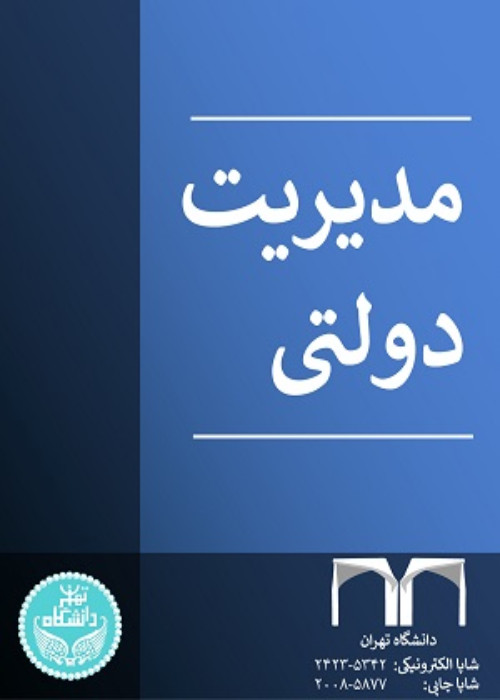Designing Local Self-government Evaluation Model in Provincial Level in Islamic Republic of Iran
Author(s):
Article Type:
Research/Original Article (دارای رتبه معتبر)
Abstract:
Objective
The de-concentrated organizing of provinces along with the expanse of country, ethnic and religious diversity and the massive volume of public services, have confronted Islamic Republic of Iran with various problemssuch as reducing productivity, undermining of local sovereignty and promoting ethnic and religious nationalism. The purpose of this research is to identify indicators of local self-government as an example of decentralized local government.
Methods
The model in this research was designed using mixed–method approach. In the first phase, due to the lack of ample previous researches on indicators of local self-government evaluation, and also due to the consideration of ethnic and climatic stresses and geographical-political situations of Iran, the initial evaluation pattern of local self-government was designed through the Directed Content Analysis method. In this section, 16 experts were interviewed. Finally, the initial evaluation pattern was tested using Structural Modeling Equation.
Results
Analyzing the results of the interviews, in the qualitative section, legal identity, democracy, government duties, decision-making powers, and public organizations elements were extracted from 567 indications, 150 concepts and 22 categories. The results of the quantitative test indicated the confirmation of all categories and concepts, except for the partisanship concept. Finally, the self-government conditions of the provinces have been evaluated using proposed local self-government evaluation model.
Conclusion
Since no evaluative model for self-government conditions of the provinces has not been designed so far, the results of this research can be used to decentralize the provinces. The provinces of Tehran, Khorasan-e-Razavi and Isfahan showed better status in all of the self-government indicators. In contrast, the provinces of Sistan-o-Balochestan, Kordestan, Ilam and northern and southern Khorasan showed lower status in self-government, which can lead to an increase in the developmental gap between these provinces.Language:
Persian
Published:
Quarterly Journal Public Administration, Volume:10 Issue: 36, 2019
Pages:
629 to 650
magiran.com/p1945721
دانلود و مطالعه متن این مقاله با یکی از روشهای زیر امکان پذیر است:
اشتراک شخصی
با عضویت و پرداخت آنلاین حق اشتراک یکساله به مبلغ 1,390,000ريال میتوانید 70 عنوان مطلب دانلود کنید!
اشتراک سازمانی
به کتابخانه دانشگاه یا محل کار خود پیشنهاد کنید تا اشتراک سازمانی این پایگاه را برای دسترسی نامحدود همه کاربران به متن مطالب تهیه نمایند!
توجه!
- حق عضویت دریافتی صرف حمایت از نشریات عضو و نگهداری، تکمیل و توسعه مگیران میشود.
- پرداخت حق اشتراک و دانلود مقالات اجازه بازنشر آن در سایر رسانههای چاپی و دیجیتال را به کاربر نمیدهد.
دسترسی سراسری کاربران دانشگاه پیام نور!
اعضای هیئت علمی و دانشجویان دانشگاه پیام نور در سراسر کشور، در صورت ثبت نام با ایمیل دانشگاهی، تا پایان فروردین ماه 1403 به مقالات سایت دسترسی خواهند داشت!
In order to view content subscription is required
Personal subscription
Subscribe magiran.com for 70 € euros via PayPal and download 70 articles during a year.
Organization subscription
Please contact us to subscribe your university or library for unlimited access!


